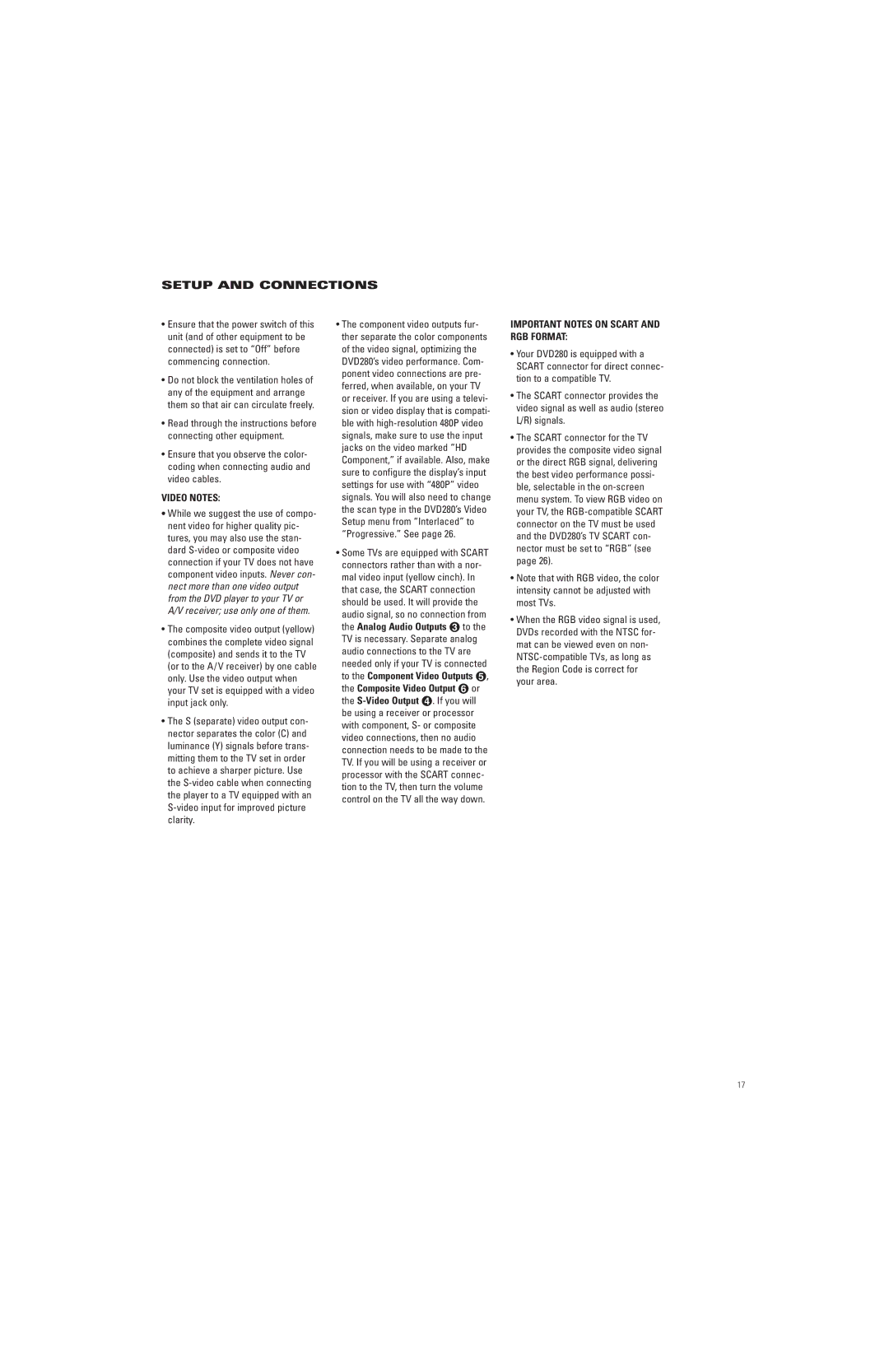
SETUP AND CONNECTIONS
•Ensure that the power switch of this unit (and of other equipment to be connected) is set to “Off” before commencing connection.
•Do not block the ventilation holes of any of the equipment and arrange them so that air can circulate freely.
•Read through the instructions before connecting other equipment.
•Ensure that you observe the color- coding when connecting audio and video cables.
VIDEO NOTES:
•While we suggest the use of compo- nent video for higher quality pic- tures, you may also use the stan- dard
•The composite video output (yellow) combines the complete video signal (composite) and sends it to the TV (or to the A/V receiver) by one cable only. Use the video output when your TV set is equipped with a video input jack only.
•The S (separate) video output con- nector separates the color (C) and luminance (Y) signals before trans- mitting them to the TV set in order to achieve a sharper picture. Use the
•The component video outputs fur- ther separate the color components of the video signal, optimizing the DVD280’s video performance. Com- ponent video connections are pre- ferred, when available, on your TV or receiver. If you are using a televi- sion or video display that is compati- ble with
•Some TVs are equipped with SCART connectors rather than with a nor- mal video input (yellow cinch). In that case, the SCART connection should be used. It will provide the audio signal, so no connection from the Analog Audio Outputs £ to the TV is necessary. Separate analog audio connections to the TV are needed only if your TV is connected to the Component Video Outputs ∞, the Composite Video Output § or the
IMPORTANT NOTES ON SCART AND RGB FORMAT:
•Your DVD280 is equipped with a SCART connector for direct connec- tion to a compatible TV.
•The SCART connector provides the video signal as well as audio (stereo L/R) signals.
•The SCART connector for the TV provides the composite video signal or the direct RGB signal, delivering the best video performance possi- ble, selectable in the
•Note that with RGB video, the color intensity cannot be adjusted with most TVs.
•When the RGB video signal is used, DVDs recorded with the NTSC for- mat can be viewed even on non-
17
